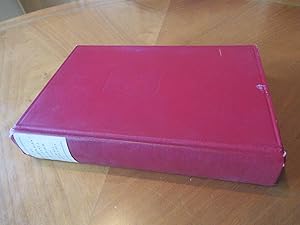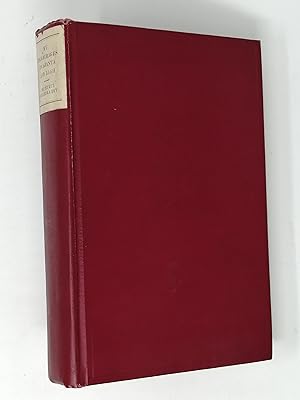DEY, SRI MUKUL CHANDRA (2 risultati)
Tipo di articolo
- Tutti gli articoli
- Libri (2)
- Riviste e Giornali
- Fumetti
- Spartiti
- Arte, Stampe e Poster
- Fotografie
- Mappe
-
Manoscritti e
Collezionismo cartaceo
Condizioni
- Tutte
- Nuovi
- Antichi o usati
Legatura
- Tutte
- Rilegato
- Brossura
Ulteriori caratteristiche
- Prima edizione
- Copia autografata
- Sovraccoperta
- Con foto
- No print on demand
Paese del venditore
Valutazione venditore
-
My Pilgrimages To Ajanta & Bagh
Editore: George H. Doran, New York, 1925
Da: Arroyo Seco Books, Pasadena, Member IOBA, Pasadena, CA, U.S.A.
Membro dell'associazione: IOBA
Libro Prima edizione
Hardcover. Condizione: Very Good. 87 Plates And Illustrations By Mukul Chandra Dey (illustratore). First American Edition. 245 Pp. Red Cloth, Paper Spine Label, First American Edition With American Title Page And "First Published 1925" On Verso. Lightly Used, No Fraying, Hinges Tight, No Marks, Small Chip To Corner Of Spine Label. Mukul Chandra Dey (1895 ? 1989) Was A Student Of Rabindranath Tagore's Santiniketan And Is Considered As A Pioneer Of Drypoint-Etching In India. The Entire Family Of Mukul Dey Had Artistic Talents, The Brother Manishi Dey Was A Well-Known Painter, And His Two Sisters, Annapura And Rani, Were Accomplished In Arts And Crafts As Well,; His Daughter Manjari Married Shantanu Ukil, A Leading Painter Of The Bengal School Of Art. He Was The First Indian Artist To Travel Abroad For The Purpose Of Studying Printmaking As An Art. While In Japan In 1916, Mukul Dey Studied Under Yokoyama Taikan And Kanzan Shimomura At Tokyo And Yokohama. At Yokohama Rabindranath Tagore And Mukul Dey Lived As Guests Of Japanese Silk-Merchant Tomitaro Hara At His Famous Residential Complex Sankeien, Enjoying A Rare Opportunity To Study Classical Chinese And Nihonga Style Japanese Paintings. Dey Received His Initial Training At Rabindranath Tagore's Santiniketan. He Then Travelled To America From Japan In 1916 To Learn The Technique Of Etching Under James Blanding Sloan And Bertha Jaques In Chicago, To Whom Dey Was Introduced By American Artist Roi Partridge And His Wife Imogen Cunningham. Mukul Dey Remained A Life-Member Of Chicago Society Of Etchers. On His Return To India In 1917, Dey Concentrated On Creating Etchings As A Fine Art. He Also Supported Himself Through Making Portrait Drawings Of The Rich And Famous, And Turned These Into Etchings. In 1920 Dey Once Again Travelled Abroad For The Purpose Of Study, This Time Learning Etching And Engraving Under Frank Short And Muirhead Bone. He Studied At Both The Slade School Of Fine Art And The Royal College Of Art In London. At Slade School Of Art Mukul Dey Was A Student Of Professor Henry Tonks. According To The Polish Sculptor Stanislaw Szukalski, When Mukul Was In America, He Showed Szukalski His Drawings, Which Impressed The Artist. He Then Told Szukalski Of His Desire To Venture Into Paris, To "Finish His Study", Despite The Extreme Disapproval Of This Decision By Mukul's Mentor, Tagore. Szukalski Thought Of Paris As A Factory For The "Brainwashing Of The Public Of Every Nation", Into Thinking Kandinski, Picasso, Etc., Were Masters. Szukalski Told Mukul, "You Are Already A Fine Artist, But With Your Silly Anticipation Of Finding Miraculous Culture In Europe, You Will Swallow As A New Religion Any Pseudo-Movement, Any Ism Of The Misfits Who Abuse Painting And Sculpture With Combs, Forks And Brushes Stuck In Their Noses To Give An Easy Semblance Of Individuality. Later Come To Europe, With Enough Belief In Yourself To Look Upon European Decadence With Contempt And The Ability To Select Really Worthy Examples Of Art From All Ages And Cultures". This Argument Persuaded Mukul To Return To Santiniketan, To The Delight Of Tagore. Mukul Dey Chose An Essentially Western Medium To Portray Various Sides Of Indian Life. Unlike Artists Such As Haren Das, Whose Woodcut Printing Technique Was More Indigenous To Indian Culture, Dey Concentrated On Drypoint Etching, A Thoroughly European Practice. Regardless Of His Adopted Western Technique, Dey Chose Subjects Such As River Scenes In Bengal, Traditional Baul Singers, The Markets Of Calcutta, Or The Life Of Santhal Villagers In The Birbhum District, Near The Santiniketan Art School. When The Tagore Family Of Kolkata Created The Vichitra Club At Their Ancestral Home Of Jorasanko, Mukul Dey Became An Active Member. Dey Was Appointed The First Indian Principal Of The Government School Of Art, Calcutta, In 1928. (See Wikipedia For Full Biography).
-
My Pilgrimages to Ajanta & Bagh.
Editore: George H. Doran, New York 1925, 1925
Da: ROBIN SUMMERS BOOKS LTD, Aldeburgh, Regno Unito
Prima edizione
Condizione: Very Good. First edition. Hardback. George H. Doran, 1925. Original dark red cloth with printed paper spine label. Light wear to covers with a couple of tiny chips to label, otherwise very good indeed. No dust jacket.



